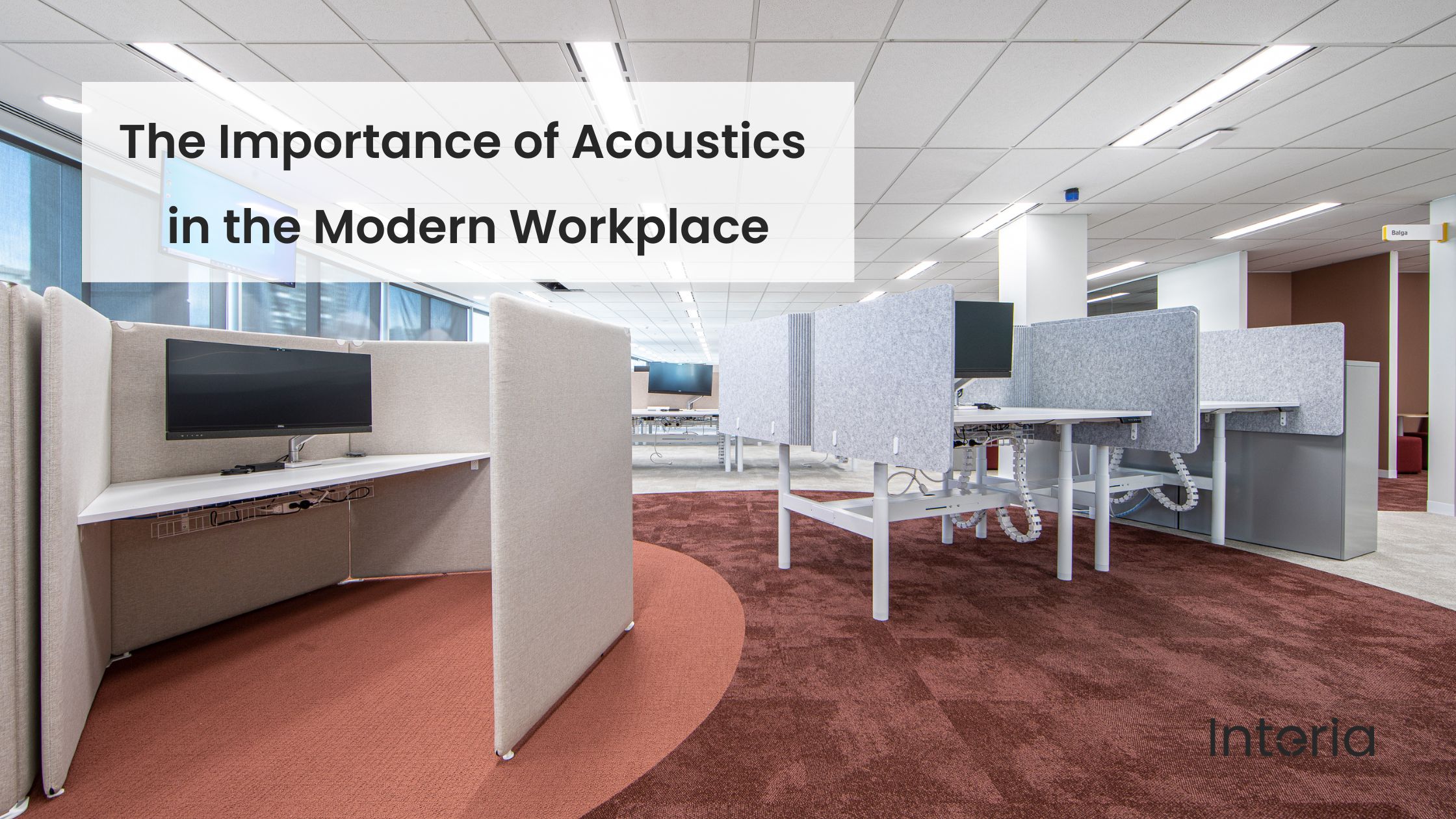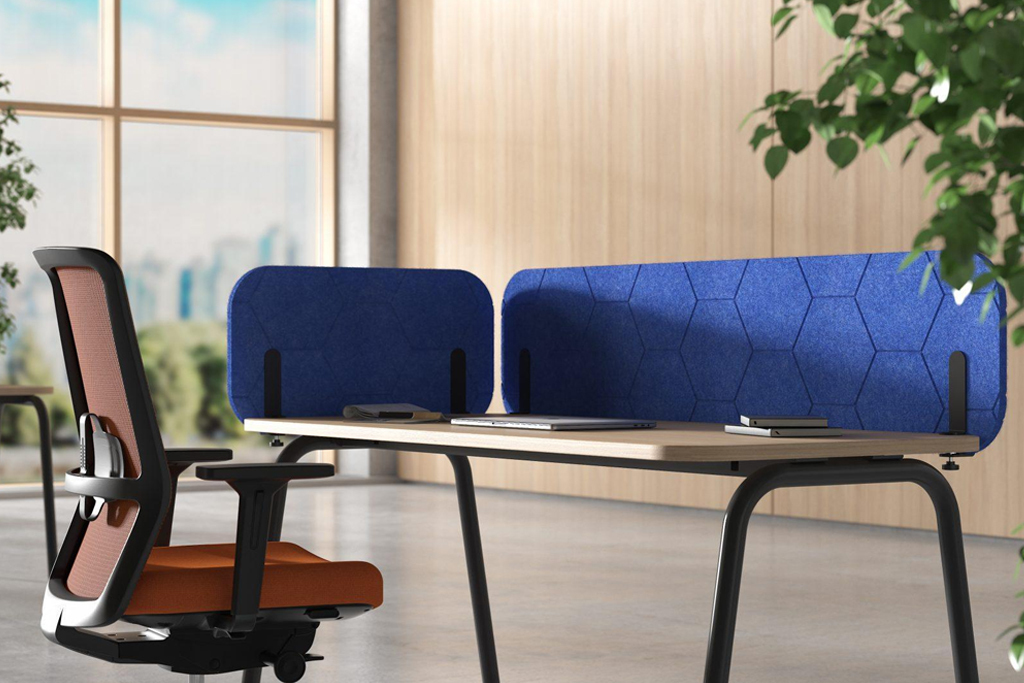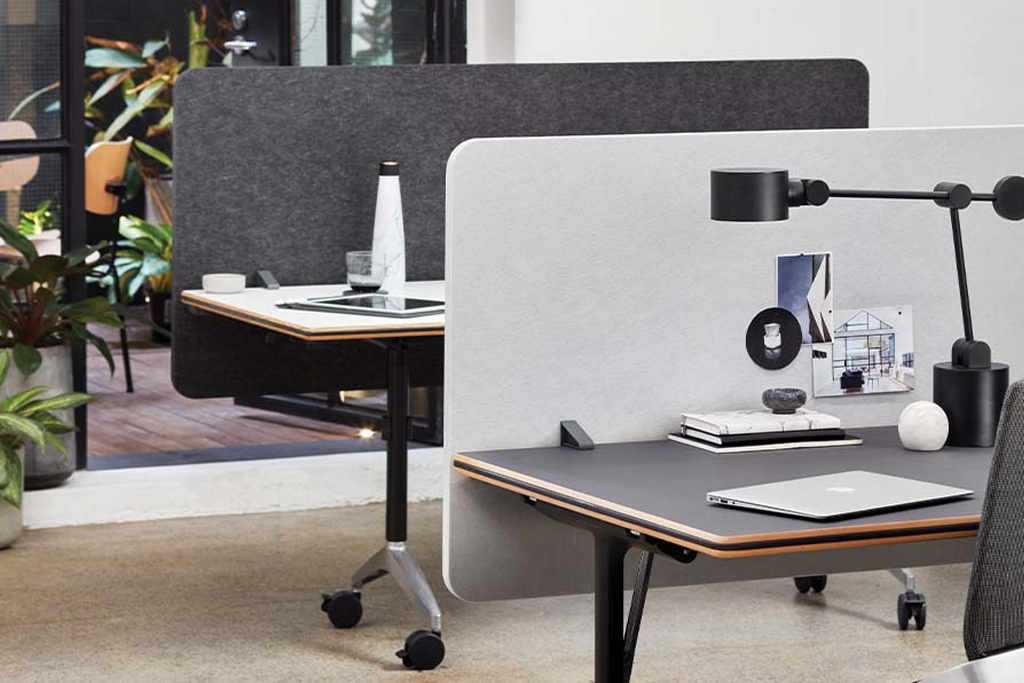
The Importance of Acoustics in the Modern Workplace
Imagine you’re hunched over your desk, working on that important project that’s due today. Suddenly, you hear a chorus of laughter from across the room. If that wasn’t enough, you’re battered with the bassy reverbs from a video presentation on the opposite side. Let’s not forget the clocks ticking, electronic devices beeping, phones ringing, and keyboards clicking and clacking. Can you focus on your task at hand with all this noise?
Noisy offices are distracting and negatively impact your employees’ productivity and overall well-being in the long run, which can contribute to higher staff turnover. It indicates how vital acoustics is in workplaces, especially modern ones with open-office plans.
The Modern Workspace and Its Need for Acoustic Design
Sound was once an afterthought in building design, but now it’s at the forefront of the minds of many interior designers and architects. In the past, offices were designed strictly for serving their primary function, with little thought given to things like acoustics. As we’ve developed a better understanding of employee productivity and satisfaction, acoustic design has become essential for office planning.
As workplaces continue to evolve, we expect better ways of communication and collaboration for increased productivity. Modern workspaces with open-floor plans are excellent practices to achieve that. Yet, poor workplace design and layouts that amplify unnecessary sound can significantly hamper this.
Interior designers and architects can find maintaining pleasant acoustics in the modern workspace challenging because sound easily flows throughout the open space. Even a slight noise in one corner of the office distracts employees heavily engaged with work, demanding more focus. Glass walls built in the modern workplace allow for natural light to flood into the office but invite outside noises from traffic, construction, etc.
Fortunately, creating an acoustically conscious workplace isn’t as hard as it seems. A little extra effort on the workplace design and layout and installing some acoustic treatments helps drastically improve office acoustics. Let’s look at why acoustics are essential in the modern workplace and explore ways to achieve it.
Types of Noise at the Workplace

Before we dive into the subject, we need to be clear that not all sounds are noises. It’s crucial to discern and separate the different types of noise prevalent in your workspace.
Simply put, noise is an unpleasant or unwanted sound that causes moderate to major irritation or discomfort in hearing. There are four types of noise, all of which you can find in the workspace.
Continuous Noise
Continuous noise is any unpleasant sound constantly playing, such as factory equipment or engine noises. It can come from heating and ventilation systems or printers in office buildings. Traffic noises from outside are also classified in this category.
Intermittent Noise
Intermittent noise goes from quiet to loud and back in short intervals. Some instances include trains passing by, planes flying overhead or factory equipment operating in cycles.
Impulsive Noise
Impulsive noises burst out suddenly, leaving you startled. These can result from sudden laughter or applause from co-workers inside the workspace and construction or demolition work outside.
Low-frequency Noise
As the name suggests, low-frequency noise includes low rumbles and hums. We hear such noises from appliances like refrigerators or nearby power stations.
These noises that impact your business can be internal (from within the workplace) or external (from outside). No matter the source, it’s crucial to reduce the impact, and there are various ways to do so. Read on to find out.
The Importance of Acoustics in the Modern Workplace

No matter how aesthetically pleasing your workplace ambience is, if it doesn’t accommodate sound adequately, it’s not worth it. Long-term exposure to noise in an office environment is detrimental to your business. A modern workplace with just the right amount of sound circulating throughout the space is vital in terms of productivity, privacy, and employees’ well-being. Let’s explore each one.
1. Boosts Productivity
Research conducted by ABC News in a simulated open-plan office shows a causal relationship between open-plan office noise and physiological stress. According to the study, office noise escalates negative mood by 25%. This negative impact on mood directly affects the ability to perform well at work.
Proper acoustics can make all the difference in an office setting. With reduced background noise, employees can focus on their daily tasks without distractions from other areas of work or personal conversations spilling on them constantly.
2. Enhances Employee Wellness
In a 2019 survey regarding noise and well-being at work, we find a staggering number of office workers who said that noise at their job impacts how well they work. Over 65% of workers struggled to complete work accurately and timely, with 44% noting a negative impact on stress levels and overall wellness.
For many, intense noise is the most common trigger that causes physiological stress responses. These include spikes in blood pressure or increased heart rate, to name a few. Apart from stress, other possible health effects include high blood pressure, weight loss, sleep disruption, and hearing loss, which can lead someone down an unhealthy path towards depression.
Acoustic solutions are an ideal way to help organisations achieve the right balance of sound for a collaborative workplace, boosting employees’ physical and mental well-being.
3. Provides Privacy
The acoustic needs of the modern office are more demanding than ever. No matter how communicative your space is, not everyone in your workspace needs to know what you’re doing. There must always be a private meeting or sensitive conversation area that neither reverberates sound outside nor inside in an open plan environment.
The acoustic workplace design incorporates designated spaces to take care of private matters or uses acoustic treatments like sound absorbents in offices to ensure employee privacy, making them feel safe.
How Much is the Perfect Amount of Sound?
When thinking of an acoustic workspace, you might envision a quiet place. However, like a loud workspace, extreme silence also makes a workplace acoustically unpleasant.
When there’s pin-drop silence, you can even distinctly hear hushed conversations or sounds of pop-up notification from across the room, which isn’t ideal for an acoustic workspace. It’s necessary to have some level of sound but if it’s too loud, you can opt for sound control techniques.
It’s recommended that an office setting with large open spaces have a sound of not more than 70 dB. The sound of people talking or machinery beeping in the background should be 45-55 dB to maintain an optimal acoustic environment and ensure health and happiness.
Now that we understand the importance of acoustics in modern workspaces and the optimal sound to achieve a healthy workspace, let’s find out how to reduce noise in an open-plan office.
The ABC of Noise Control in Modern Workspaces

There are many measures to control workplace noise. The ‘ABC’ of acoustics refers to absorption, blocking and covering. You can use one or all of them depending on your requirement.
For instance, while renovating a workspace, it’s essential to consider sound-absorbing materials that help keep noise from leaving the space. In contrast, when constructing distraction-free communal workspaces, blocking out outside noise and absorbing and masking sounds within the office is crucial.
1. Absorption
The ideal way to control noise creation within the workspace is by implementing sound absorption techniques as they shorten the time taken by sound to fade out. Here are some ways to promote the absorption of sound:
- Using upholstered furniture like soft chairs, sofas, high-rise chairs, etc.
- Soundproofing office walls and ceilings with acoustic panels
- Decorating walls with pinboards, canvas pictures and fabric coated frames
- Hanging false curtains and tapestries
- Insulating the floor with acoustic underlays, carpets, rugs and sound reduction pads
- Placing sound-absorbing indoor plants in noisy areas
- Adding cushions and pillows on chairs and sofas
2. Blocking
Blocking using a barrier to prevent sound transmission from one area to another is a great way to control internal and external noises.
Workspace design and layout play a vital role in blocking internal noise. Creating designated quiet spaces, study zones, breakout areas, etc., using upholstered materials within an open-plan office minimise the spread of noise to and from these areas. You can opt for acoustic room dividers to break large open floor offices and create a barrier between the sound source and work areas. Screens are also a great way to block sounds coming towards or going out from your desk while providing some level of privacy.
If you use sound-blocking materials like concrete in the building structure during construction, you can lower the level of external sounds penetrating your building. In the case of pre-built spaces, building bookcases against the walls block a fraction of the noise that’s in the workplace.
3. Covering
The most common noise in an office space is from people talking, which isn’t too loud, yet hinders your focus. Covering or masking is an efficient way to control such noise in the workspace.
Sound masking uses an ambient sound of the same frequency as human speech in the background. These soothing sounds and other soundproofing techniques enhance office comfort by reducing distracting noises and protecting speech privacy. A sound masking system implemented throughout the workplace helps create an ambient atmosphere to get work done effectively.
Implement Modern Acoustic Workplace Designs
Office acoustics are an unavoidable part of the modern workplace. With so many people in one space, it’s crucial to find ways to keep your employees productive without sacrificing comfort. We hope you’ve better understood office acoustics to plan your office space more effectively.
For sound-absorbing furniture that suits modern workspaces, please feel free to contact us for a free consultation or call 1800 549 852 to discuss your needs. At Interia, we work together with you to design custom furniture that reflects your unique style and personality.



